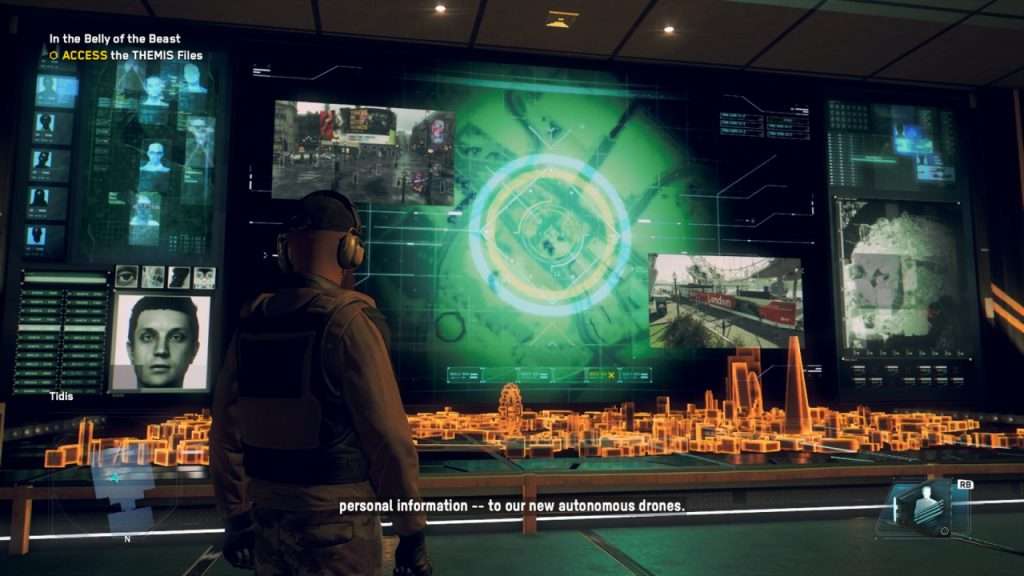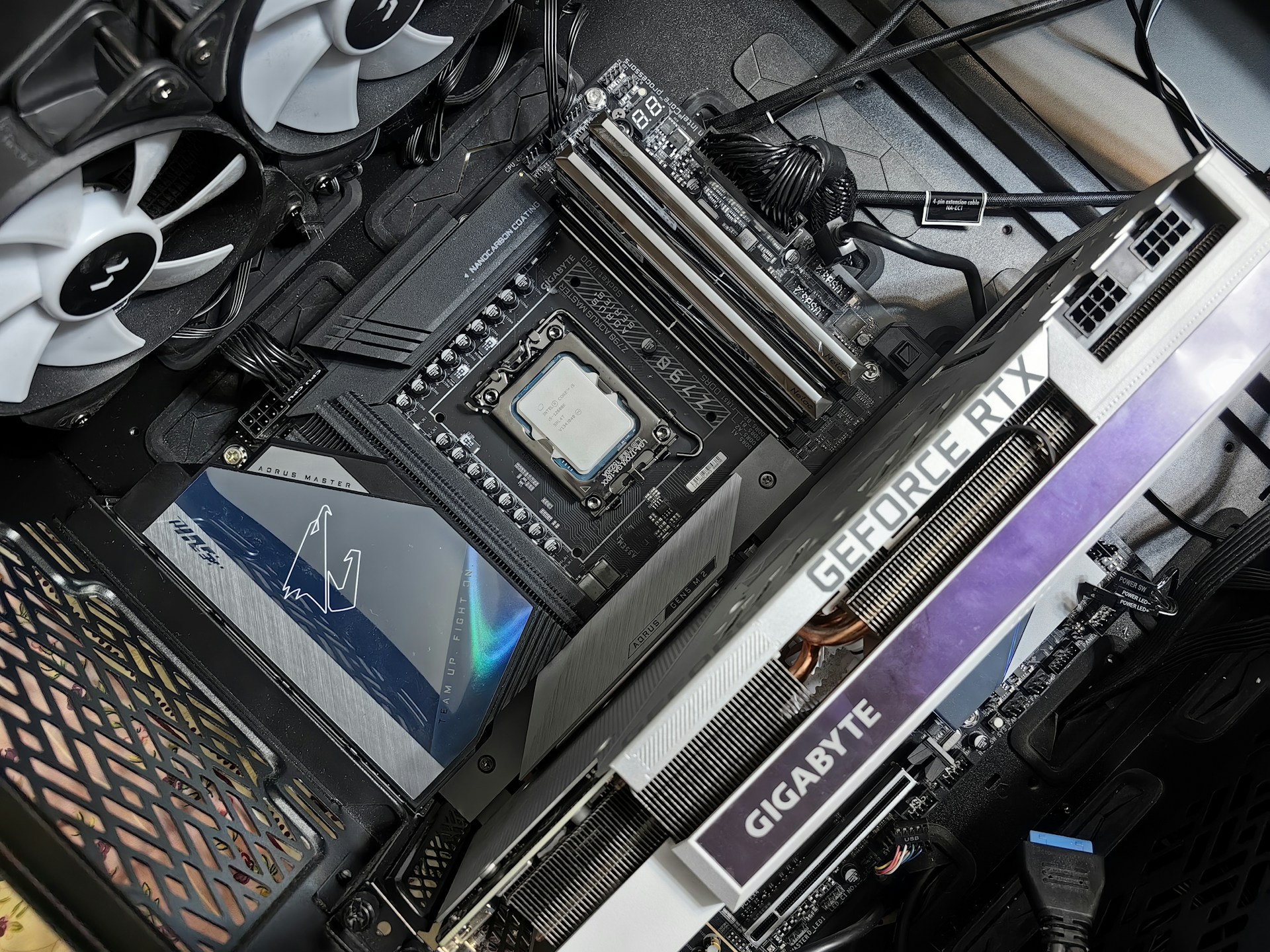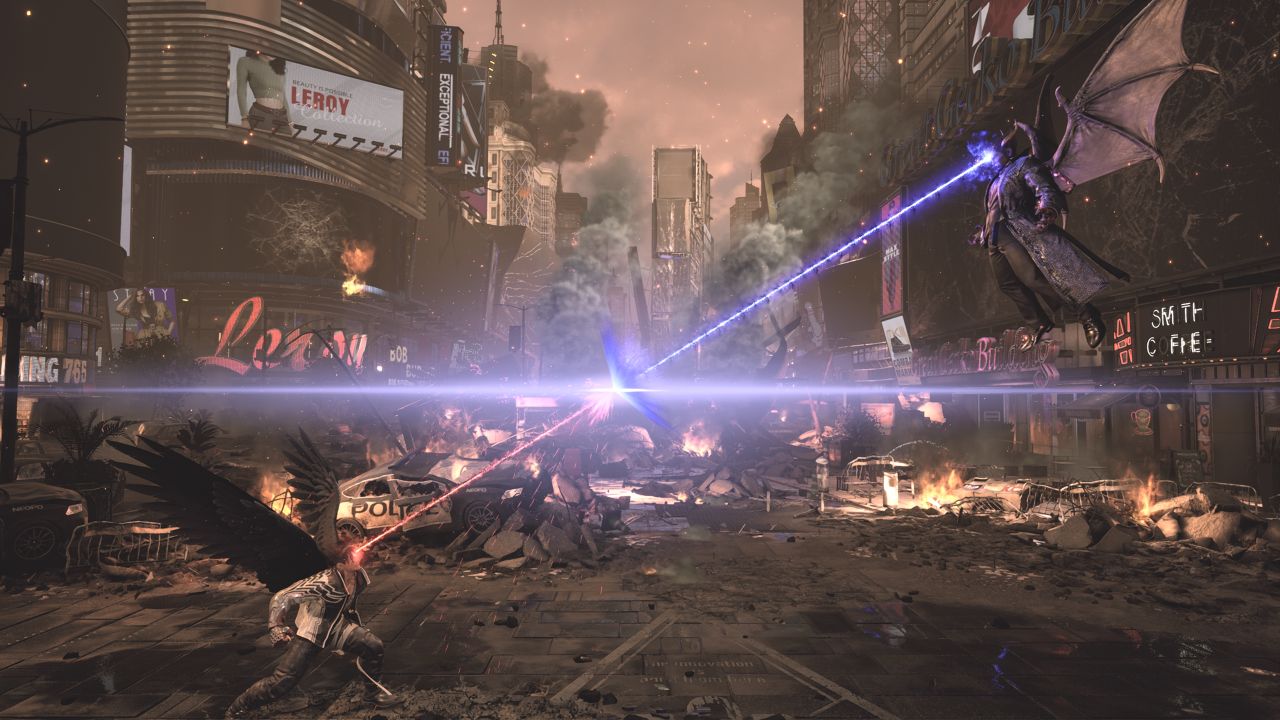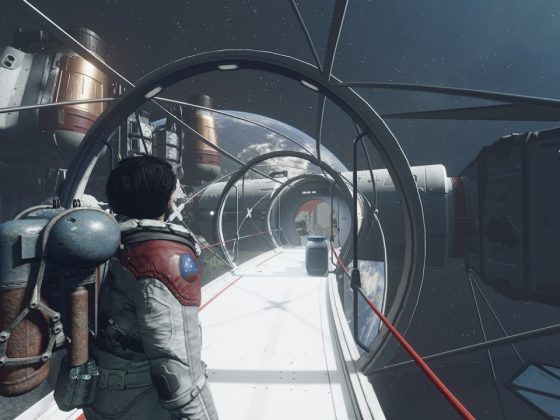Watch Dogs: Legion is the third game in Ubisoft’s high-tech, open-world, third-person action/stealth franchise, which follows the exploits of an elite hacker group known as DedSec. Where the other Watch Dogs games took place in the present, Legion jumps forward in time to a futuristic, dystopian version of London. Here, the populace has been oppressed by a combination of mega-corporations and a privatized security group known as Albion, resulting in unlawful arrests, excessive corporate greed, and treacherous politics. London is in dire need of a savior, and by rebuilding DedSec from the ruins, only you can save the day. With a variety of new gameplay mechanics, including the ability to recruit and play as any character in the game, Watch Dogs: Legions promises a next-gen experience that pushes the franchise to greater heights. Does Watch Dogs: Legion succeed with its tale of futuristic liberation, or is this just an overly-ambitious sequel that needs some tweaking?

The Death and Rise of DedSec
Watch Dogs: Legion picks up several years after the events of Watch Dogs 2, with the London-based chapter of the hacker group DedSec all but erased. After being framed for a terrorist attack by a ghostly figure known only as Zero-Day, DedSec has fallen from grace and been mostly dismantled. In the meantime, the city has fallen into disrepair, as corporations and the local government continue to care more about their profit margins than the welfare of the citizens. Using DedSec as a scapegoat, the powers that be use the attack as an excuse to heighten surveillance, increase the presence of police and privatized security, and gain a fiercer grip on their constituents.

As technology advances and further isolates community members from each other, London has become muzzled by the firm grip of authority. Unwilling to watch their beloved city become the pawn of greedy executives and politicians, DedSec returns in the form of a grassroots effort to rebel and resist. Along with the dreary hacker Sabine and DedSec’s cheeky AI companion Bagley, you must help rebuild the ranks of DedSec by liberating the various boroughs of London and recruiting like-minded citizens into the cause. In order to clear DedSec’s name, you and your crew must uncover the mysterious identity behind a terrorist group known as Zero-Day.

Watch Dogs: Legion offers a compelling concept, set against a topical era of political unrest. While the bones of Legion‘s story are interesting, it generally flops in execution, resulting in an awkward and occasionally ridiculous tone. For example, my starting character in Watch Dogs: Legion talked with a heavy, at times impressionist-level English accent, constantly spewing out chav lingo and acting like an exaggerated caricature of street culture. While this was funny at times and kept the situation lighthearted, it was hard to take any of the cutscenes very seriously. After spending a few hours completing missions, the story picks up a bit more steam, but it failed to hold my attention for long periods of time.
Grassroots Recruitment
After a brief introduction sequence that both teaches you the basic controls and sets up the narrative, Watch Dogs: Legion throws you into the city and lets you go wild. You’ll pick a character to start out with, and after a few beginner missions, you’re free to explore the various boroughs of London completing activities, missions, and an assortment of mini-games. Like any other open-world action game, Watch Dogs: Legion has a map littered with things to do, collectibles to grab, and characters to meet. The defining feature that makes Legion stand out is its recruitment mechanic, which lets you recruit and then play as any citizen in the game world. This mechanic comes with some gameplay limitations – you can’t walk up to an Albion officer and recruit them right away, for example – but it’s still pretty impressive. Generally speaking, if you’re driving or walking through an area and see a civilian who sparks your interest, you can probably walk up to them and initiate recruitment.

Usually, you’ll have to complete a brief recruitment mission in order to add another member to DedSec. These short ordeals usually involve venturing into a restricted area, be it gang turf or Albion security property, and dispatching a certain enemy, hacking a key object, etc. Once you’ve recruited a character, you are free to swap over and play as them at any time. You can even spruce up their appearance by buying new cosmetics in various shop menus by spending the in-game currency known as ETO.

Characters are usually categorized by their occupation, be it construction worker, assassin, package deliverer, or otherwise. Different characters possess unique gadgets, abilities, and weapons, offering various play-styles. For example, a spy is an ideal pick for stealth-based missions, as they come equipped with a silenced pistol and the ability to instantly take down gun-wielding enemies. Alternatively, construction workers are great for missions that require exploration, as their personal cargo drone is strong enough to carry your weight, allowing you to fly over rooftops and access gated areas with ease.

While there are a few character-classes that are much more powerful than others, it’s still fun to experiment with new characters as you continue to recruit more loyal DedSec members. During my playthrough, I mainly played as a few select operatives, but still recruited my fair share of newbies. Even if I didn’t end up using the characters in any main missions, I found myself recruiting characters just for the heck of it. Some of the sillier characters I discovered ended up being my favorites, like the chrome-suited statue mime named Boris, or a seemingly docile old lady named Guinevere. Even though Guinevere was unable to run or take cover due to her slumped back, I enjoyed causing a ruckus with her every now and then, generating some mayhem and truly enjoying the Watch Dogs: Legion sandbox for what it was.
Permanent Consequences
You’ll also want a stacked team of recruits if you’re playing with permadeath on. While it’s not toggled on by default, Watch Dogs: Legion was designed with permadeath in mind, so those looking to get the “authentic” experience will probably want to play with it on. With permadeath on, any recruit that dies during a mission is dead for good. You won’t have their abilities or skills at your disposal anymore, so you’ll have to go recruit more squadmates or continue to suffer. If all of your recruits die, it’s game over, and you’ll have to restart from the top.

While I appreciate the added stress that it affords, especially when you consider Legion‘s emphasis on stealth-based missions, I prefer to play with permadeath toggled off. Besides my worries regarding the occasionally clunky controls, permadeath made me feel restricted and less likely to experiment with the gadgets at my disposal. Instead of trying new things, I was more likely to err on the side of caution. Ultimately, this is just a personal preference, as the permadeath feature is implemented well. If you’re the kind of player who enjoys the brutal consequences of permadeath, Watch Dogs: Legion is one of the more unique applications of the feature that I’ve seen.
Speeding Through London
Even with the recruitment feature considered, Watch Dogs: Legion offers a pretty standard open-world experience. Legion‘s map is dotted with points-of-interest, missions, and collectibles, offering plenty of places to go and things to do. The city is a surprisingly accurate but more compact version of London, hitting all the key landmarks and identifying English features. Depending on the system you’re playing Watch Dogs: Legion on, the visuals range from crisp and shiny to slightly blurry, with significant texture pop-in. Generally speaking, the art design is solid, but performance issues hamper things.

After you decide on a mission or activity to pursue, you’ll likely hop in a car and drive to your destination with reckless abandon. Legion features a decent collection of automobiles to steal, including futuristic and modern sedans, motorcycles, and other specialty vehicles. While driving, you can hack other cars and objects in the road with the tap of a button, resulting in some pretty entertaining chases.

Unfortunately, the vehicle controls can feel clunky and stiff at times, which has been a consistent problem throughout the Watch Dogs series. If you’re just driving around town, things work fine enough, but at top speeds there’s a lack of finesse. Luckily, there are plenty of fast-travel points to utilize as well as a handy and futuristic “auto-drive” mechanic, so you don’t have to spend tons of time behind the wheel if you don’t want to.
Hacking Adventures
Missions offer a variety of objectives, but usually require you to sneak, hack, and occasionally brawl your way through areas crawling with armed guards. There’s an emphasis on stealthy, non-lethal combat, as health is limited and enemies are usually pretty accurate. If you’re trying to liberate any of the boroughs of London, you’ll have to complete a set of liberation tasks, spread out across the region. You’ll have to scurry to the top of skyscrapers to put up digital graffiti, sneak into buildings and photograph illegal activities, rescue friendly characters, and more. I enjoyed hopping from task to task, experimenting with new play-styles as I went, and picking up other recruitment missions along the way. While the missions themselves aren’t wholly original and at worst can feel repetitive, liberating the boroughs of London still feels satisfying.

The overarching “main” story missions offer a slightly more exciting and authored experience, featuring a handful of set-piece moments. Main missions usually revolve around one of the four antagonistic forces in London, be it the top brass at Albion, the demented gang kingpin nicknamed “Bloody Mary”, a mysterious tech-sector executive, or the shadowy organization known as Zero-Day. Just like with liberation missions, you are granted a certain freedom in how you go about exploring and approaching your objectives. If you fancy a character with high stealth skills, you can sneak around, using your hacking skills to unlock doors and plot your attack. You can also go in guns blazing, triggering alarms and shooting wildly, as long as you have the endurance and arsenal to deal with your enemies.

Regardless of how you choose to go about it, main missions will have you hacking extensive networks, utilizing drones to fly through massive computers, and solving some environmental puzzles. Main missions feel more polished and contain more interesting objectives than in side-missions, requiring slightly more planning, but still feel repetitive and uninspired. Like the story that guides them, main missions contain a handful of interesting and entertaining moments, but are rarely compelling enough to stand out. There are a few fleeting moments of brilliance, but they are infrequent, as the majority of missions are mostly standard fare.
The Power of Tech
As you complete missions, you’ll be rewarded with tech points that can be spent on various upgrades. You can also find tech points hidden throughout the environment, which are usually located within restricted areas or laying on the top of roofs around town. Once you’ve liberated a borough, all the available tech points in the area become visible on the map, allowing you to easily hunt them down one by one. Tech points can be used to upgrade your gadgets, enhance your hacking powers, unlock and upgrade weapons, and more.

Generally speaking, tech points are the only major form of progression in Watch Dogs: Legion. Since you can’t level up individual recruits, tech points provide some way of improving your abilities, be it through new gadgets, better weapons, or more efficient hacking methods. That said, not all upgrades are as worthwhile, depending on your preferred style of play. Unlike the skills in a sprawling action-RPG like Assassin’s Creed: Odyssey, Watch Dogs: Legions upgrades are helpful but don’t completely change the gameplay. Apart from a few useful gadgets and important hacking abilities, you can arguably ignore the majority of tech upgrades and not see a huge impact on your experience.

For instance, tech points allow you to unlock extra weapons like an SMG, shotgun, or grenade launcher that can be wielded by any recruit. This is helpful, but unnecessary if you favor stealth. Furthermore, there are six individual hack upgrades that revolve around disabling and hijacking various enemy drone devices, all of which mostly serve the same purpose. While these passive abilities are important to grab, they didn’t afford me a feeling of renewed power or strength. There are a few essential gadgets to unlock as well, including the infiltrator spiderbot and AR cloak, but the rest only exist to provide a boost in combat. Since the majority of the abilities are underwhelming and uninteresting, it’s hard to drum up the motivation to go hunting for extra tech points. Overall, the progression mechanics in Watch Dogs: Legion feel lackluster, most likely in an effort to encourage players to recruit a bigger variety of characters. The tech point system is functional and serves its purpose, but lacks the imagination and unique quality that the recruitment mechanic provides.
The Bottom Line on Watch Dogs: Legion
Watch Dogs: Legion puts a lot of emphasis on its “play as anyone” feature, but unfortunately, it’s not inventive enough to excuse the multitude of issues the game has. The story is scattered and underwhelming, with only a few truly engaging plot-points to speak of. There are a few moments of intrigue as well, but these are infrequent when compared to the hours of uninspired, mostly dull storytelling.

From a technical standpoint, the game looks great on newer systems like the Xbox Series X, but can be underwhelming on older platforms. Worse though, many players have reported rampant game crashes and glitches, occasionally ruining the fun altogether. The gameplay itself is exactly what you’d expect from an open-world action game, but with notably repetitive mission objectives, awkward vehicle physics, and bare-bones combat. It’s a disappointment, especially when you consider how fun and personable Watch Dogs 2 was. In many ways, Watch Dogs: Legion feels like a step back.

That said, Watch Dogs: Legion isn’t exactly a bad game, it’s just middling, mediocre, and occasionally boring. As a sandbox with dozens of recruitable characters, each with unique and interesting load-outs, Legion offers some raw and ridiculous fun. Evading the cops, testing out new skills, and hacking everything in sight is still entertaining, but the majority of the experience and atmosphere feels hollow and rushed. Although it still provides a competent and varied open-world adventure with some explosive moments of excitement, Watch Dogs: Legion fails to live up to expectations and ultimately feels like a lot of wasted potential.
Rating
RatingThe Good
- Recruiting any NPC is impressive
- Some intriguing story arcs
- Clearing areas of the map is satisfying
The Bad
- Predictable and underwhelming main narrative
- Many missions have repetitive objectives
- Lots of glitches and annoying game crashes
- Most of the upgrades feel useless
- Less charm or personality than Watch Dogs 2







